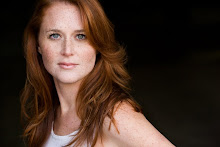



August 30, 2009 (Ngorongoro Crater)
Anita and I wake up at dawn to go for a jog, having found a blurb about a trail at the lodge that will take us out to over look the lake.
It is clear the fit craze hasn’t hit these lodges. There are no exercise rooms and this is the only place we will stay with any kind of walking path, and as Anita and I discover, it isn’t much of one. We find a dirt trail and start running, but either this is not the trail, or there’s no scenic overlook. It meanders for about a half-mile, then circles back to the lodge. At least we tried. As we come back, the sun is rising and a family of baboons starts to wander across the lawn.
After breakfast we head out for the Crater. Along the way we stop at a couple of places to shop. This time we are not harassed, because Mike has taken us to a couple of tourist traps. Ah well. Shopping in Africa. Clearly not really going to happen.
We continue the drive heading up, up, up and by mid-afternoon reach the top of the rim of the Crater, approximately 7,000 feet. Mike stops to show us where we’ll be spending the day tomorrow. Below us the Ngorongoro Crater opens up. A beautiful valley. It is the world’s largest caldera, and one of a handful that isn’t fully submerged under a lake.
Digression on calderas:
For those of you who also have used the term caldera since 7th grade earth science, according to Wikipedia it is: a cauldron-like volcanic feature usually formed by the collapse of land following a volcanic eruption. So there was a huge volcano here a long time ago that exploded and its magma chamber emptied and now there’s an enormous, 100 square-plus mile crater that is now a nature conservancy.
End of Digression.
The crater has formed its own mini ecosystem, and a fair cross section of most African game live here on a permanent basis. The Crater also has a large alkaline lake, home to many flamingos, but has forest and savannah as well.
The Crater is traditionally Maasai land, but to try to keep it from being destroyed, the government re-located the Maasai to the top of the Crater, although they are still allowed to graze their cattle and goats in the Crater as long as they have them out by dusk. Ngorongoro means cow bell in Maasai, because it looks, well, like a bell.
We start to see Maasai herders with their cattle and goats everywhere. Most of them still wear the traditional Maasai robe, the shuka, and carry their stick, cudgel, knife, and occasionally spear. They are a tribe that has retained much of their culture in the face of a changing world and are very proud of it.
Mike wants to introduce us to an old friend, Clemens, a Maasai warrior born and raised in the Crater. Apparently Clemens speaks very good English as he often helped researchers in the Crater as a young man, and he is a fun guide and conversationalist. So we set off to find him. We stop in the Maasai market (Mike says he’s often at the bar). No luck. We do find one of his two wives, who says he’s back at home. So we head toward his village. Along the way we meet a large group of Maasai children, some of them Clemens’s. One runs to find him, while Anita passes out the only thing we have on us, a box of curiously strong mints. They’re thrilled with that.
Our messenger returns to tell us that Clemens is staying with his other wife tonight. Mike leaves a message with one of the warriors to let Clemens know we are there and would like him to go out in the Crater with us the next day on safari. Having taken care of that, we head back to the lodge.
To be continued...
Photos: Maasai children. Young Maasai warriors herding their cattle out of the Crater. The Ngorongoro Crater. Baboons.

No comments:
Post a Comment